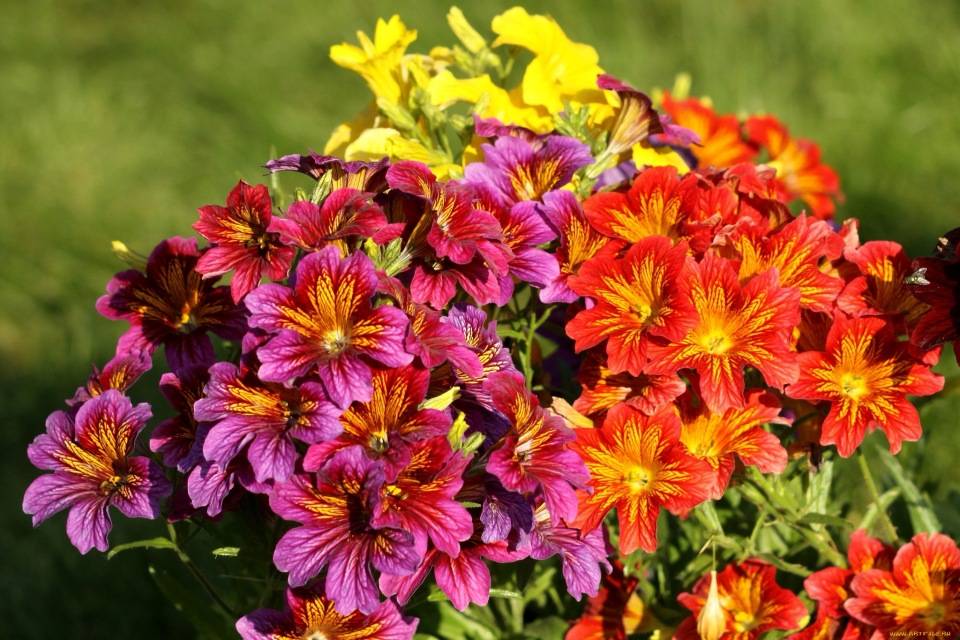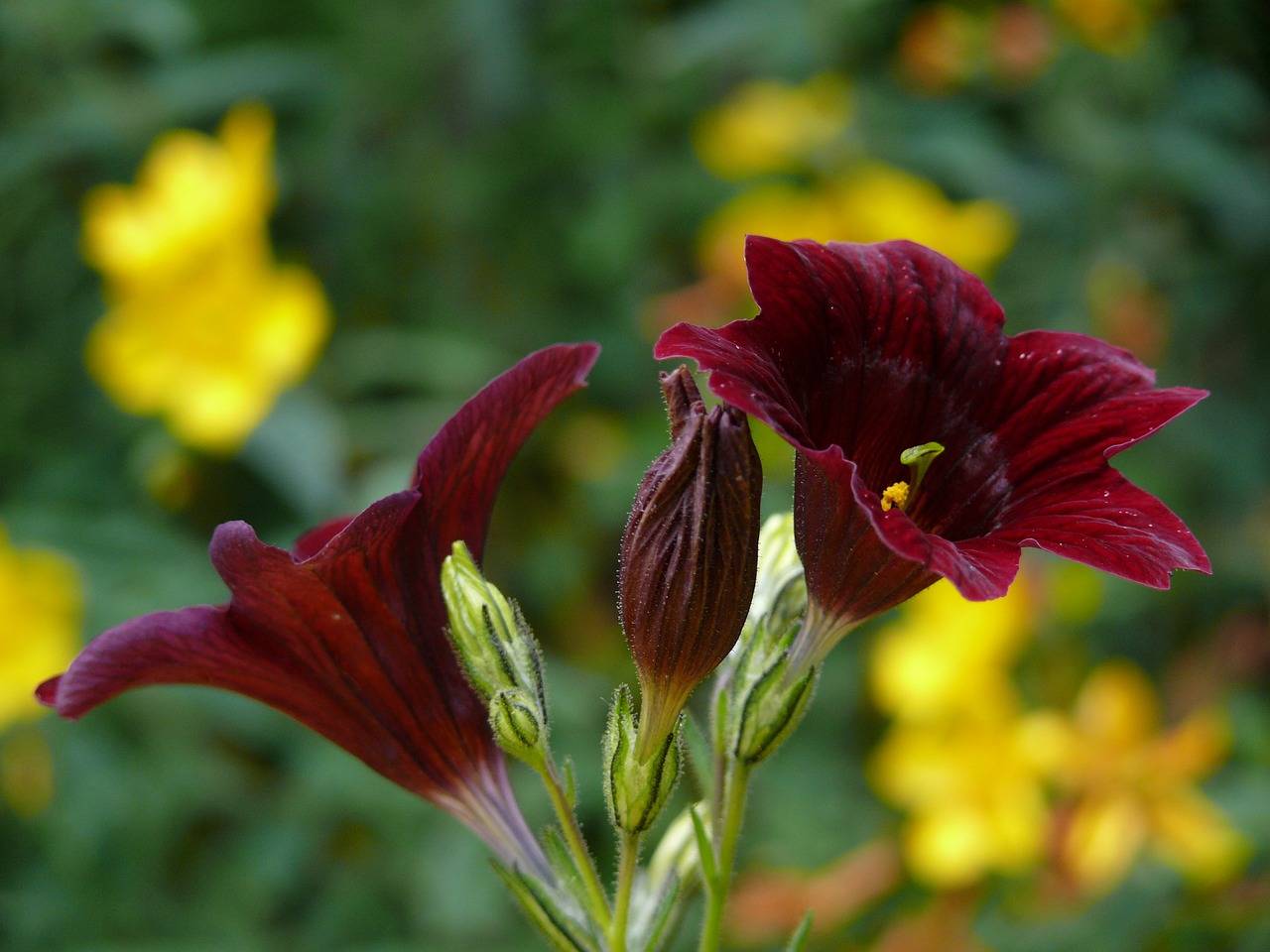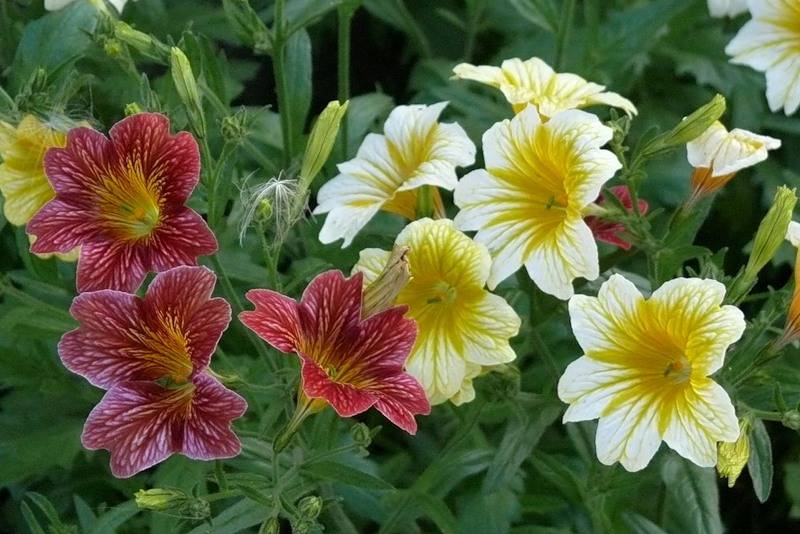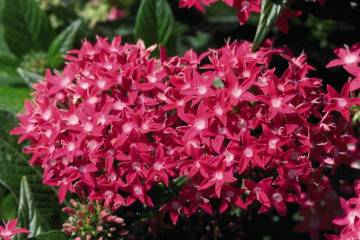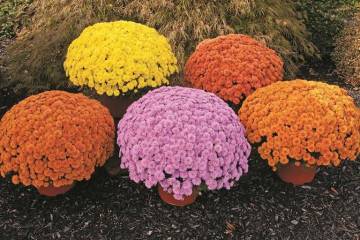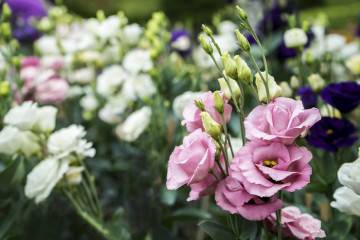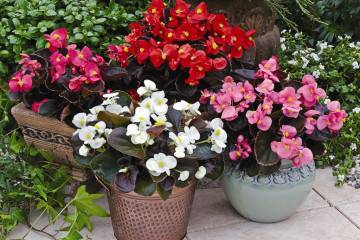Salpiglossis - cultivation of superbissim and notched species
Content:
Bright and multi-colored gramophone salpiglossis are quite often found in flower beds and in bouquets. This wonderful plant pleases with abundant flowering throughout the second half of summer. The article describes salpiglossis itself, planting and caring for it.
Features of salpiglossis
Salpiglossis is a genus of plants in the Solanaceae family. Like the other 10 species of this genus, the salpiglossis flower lives in the wild on the South American mainland.
Briefly about the history of appearance
It was from the Chilean selva that salpiglossis came to Europe, the cultivation of which began in the 20s of the 19th century.
Plant characteristics:
- life form - herbs;
- the stem hardly branches, covered with fluff with glandular villi;
- next leaf arrangement;
- whole leaves with a notched edge or pinnately dissected;
- inflorescence - loose brush or panicle;
- elongated pedicels;
- five-part cup;
- oblique corolla with a long tube and a bend of five wide lobes;
- the fruit is a box.
Salpiglossis classification
The genus includes 10 species of herbaceous plants. In culture, only one salpiglossis notched has taken root. It became the starting point for breeding, as a result of which varieties-types or forms of salpiglossis appeared.
Salpiglossis Superbissima
It features a corolla with corrugated petals.
Salpiglossis grandiflorum
Tall plants, highly branching shoots and large flowers.
Salpiglossis low
It can be grown no more than 50 cm high. During the flowering period, the whole bush is sprinkled with colored phonographs.
What varieties are most popular with gardeners
Varieties of salpiglossis, through the efforts of breeders, have given rise to many different varieties. The most popular ones are described below.
Kew Blue
Low-growing variety. The corollas are purple, on the petals there is a thin network of golden veins, the pharynx is darker than the petals. Feels good in greenhouses and conservatories. Used for spring forcing.
Casino mix
Up to half a meter high, therefore it needs additional support. The flowers are red with a yellow fauces.
Festival and Flamenco
Plants of the Festival and Flamenco varieties are low, up to 30 cm, corollas of very different colors.
Bolero
It grows up to 60 cm. It blooms profusely with pink flowers with crimson veins. The variety has a strong stem, with a sufficiently high height it does not need support.
Ali Baba
Cutting variety, up to 80 cm high. The stems are fragile, support is required. The flowers are yellow, cream, purple. The petals are decorated with contrasting veins.
Corduroy dolly
Low, up to 40 cm bushes of the variety are covered with velvety flowers 6 cm in diameter.
Fireworks
Forms a lush bush, about 60 cm in height. Violet, red, pink flowers with yellow or purple streaks. Suitable for cutting, great in the landscape.
Magic
Snow-white, scarlet, purple corollas up to 60 mm in diameter adorn a bush 40-60 cm tall. On the petals there is a yellow marble pattern.
Seed planting by seedling method
Growing bright salpiglossis from seeds will be interesting for children, green shoots appear very quickly.
Time to board
Seeds for seedlings are sown at the very beginning of March.
Choice of capacity
Sowing dishes are taken wide and shallow.
Soil and seed preparation
The soil is taken light, nutritious. It can be disinfected beforehand. To do this, place a tightly closed bag with soil in the microwave, heat for 5-7 minutes at medium power.
Flower seeds are spread over the soil surface, slightly pressing. Sprinkle with earth is not required. The container is covered with glass or foil. Seeds germinate very quickly at room temperature on a home windowsill.
Seedling care
Young plants are very delicate. To grow strong seedlings, they need to be accustomed to open air smoothly. The shelter is removed daily, gradually increasing the time. After a while, the seedlings will adapt and the shelter can be removed completely.
Dive
When salpiglossis releases the first pair of true leaves, a pick is made. Carefully remove the root of the seedling from the soil, pinch the root by 1-2 mm to stimulate the growth of lateral roots. Seedlings are planted in separate pots. Watering the seedlings should be moderate, it is not recommended to fill them. When the plants take root and begin to grow actively, pinch the tops of the shoots, forming bushes.
Transplanting
In the second half of May, the seedlings are transferred to their permanent residence. Pits are dug in the selected area. Their size depends on the size of the grown seedlings. The distance between the holes must be at least 25 cm.
Seedlings, without disturbing the earthen coma, must be planted in a previously spilled hole, sprinkled with earth and watered again.
Features of planting in a seedless way in open ground
In regions with long summers and warm springs, salpiglossis can be grown without seedlings, sown in open ground. Seeds are planted in April in prepared loose soil, 2-3 in the corners of a square with a side of 25 cm. The sown seeds are not covered with soil, covered with foil. A greenhouse is organized over the grown plants, which is removed with the onset of stable warm weather.
Features of care in the garden
Planting and caring for salpiglossis in the open field does not differ in delights and difficulties.
What conditions do salpiglossis like
Conditions most favorable for the growth and flowering of salpiglossis:
- good lighting;
- lack of drafts;
- the soil is loose, fertile, with a neutral or slightly acidic pH.
What is the plant afraid of
Salpiglossis hardly tolerates drought, stagnation of moisture in the soil and a drop in temperature, it is accustomed to an even tropical climate.
Watering
Flowers are watered almost daily, excluding periods of prolonged rains. If the days are hot and dry, in the evening, after sunset, salpiglossis leaves are sprayed with settled water. Watering can be combined with fertilizing with liquid complex fertilizers, which are applied in the form of solutions.
Mulching
Mulching can help reduce weeds and regulate soil moisture. Use bark, expanded clay, hardwood sawdust.
Loosening
The soil around the bushes needs to be loosened regularly, but do not forget that the root system of the plant is delicate and easily damaged.When loosening, the surface crust on the soil is destroyed, thereby saturating it with oxygen. An additional plus of loosening is the simultaneous destruction of weeds.
Top dressing
Complex mineral fertilizers for flowering plants are applied 1-2 times per season.
When and how it blooms
The breeders here did their best, which was appreciated by lovers of landscape gardening design.
Types, forms of flowers
Salpiglossis flowers are gramophones made of fused bases of five petals. The part where the corolla petals have grown together is called the pharynx. Usually the pharynx is colored more brightly and richly than the free edges of the petals. On the entire free surface of the petal, there are streaks of a contrasting or further dark shade. There are many combinations of colors of petals, veins and pharynx:
- rose petal, purple and gold veins, yellow throat;
- scarlet petals, orange throat, yellow veins;
- creamy petals, burgundy throat, yellow veins.
Flowering period
Flowering begins in the second decade of June and lasts until early October.
Changes in care during flowering
During the flowering period, it is imperative to feed the plant with complex fertilizer. To prolong flowering, you need to pick off the faded buds.
Post-flowering care
In place of withered flowers, a fruit is formed - an oval box. In favorable weather, seeds will ripen in it, which can be collected for sowing next year.
Wintering
Salpiglossis winters only in the southern regions of the country. Even small frosts kill delicate roots.
Possible growing problems
If the technique of care and cultivation is violated, the plant may be damaged by pests and diseases.
Pests
Salpiglossis is a flower often attacked by aphids. To cope with a small number of insects, it is enough to treat the bushes with a strong soapy solution. If there are a lot of aphids, especially heavily affected shoots are torn off and burned, and the plant is treated with an insecticide.
Thrips, small, dark, sucking insects. From folk remedies, garlic infusion will help. The radical way is insecticides.
Spider mite. The first sign of damage is a thin web on young leaves and shoots. Treatment with soapy water or garlic infusion will help save the flower. With severe damage - acaricides.
Diseases
The scourge of these flowers is root and stem rot, which has a fungal nature. Signs of the disease: dark depressed spots appear on the root collar and roots, which eventually become covered with a thin white cobweb - the mycelium of the pathogen. You can fight the disease only with the help of a fungicide; plants with a large degree of damage are burned.
Signs of improper care
The plant sends a signal for help in the following cases:
| External signs | Cause | Actions |
| Withers during normal watering, possibly root rot | Waterlogging | Stop watering until the soil is dry |
| No bloom | Little light | Transplant |
| Little moisture | Set up watering | |
| Yellow leaves | Dry air | Spray in the morning or evening |
| Dry ground | Set up watering |
Salpiglossis flowers, with proper care and location, will decorate the site. They look most advantageous in monogroups made up of varieties with different colors of corollas, and are also ideal for planting between perennials. Low-growing varieties are suitable for flowerpots and flower beds.
